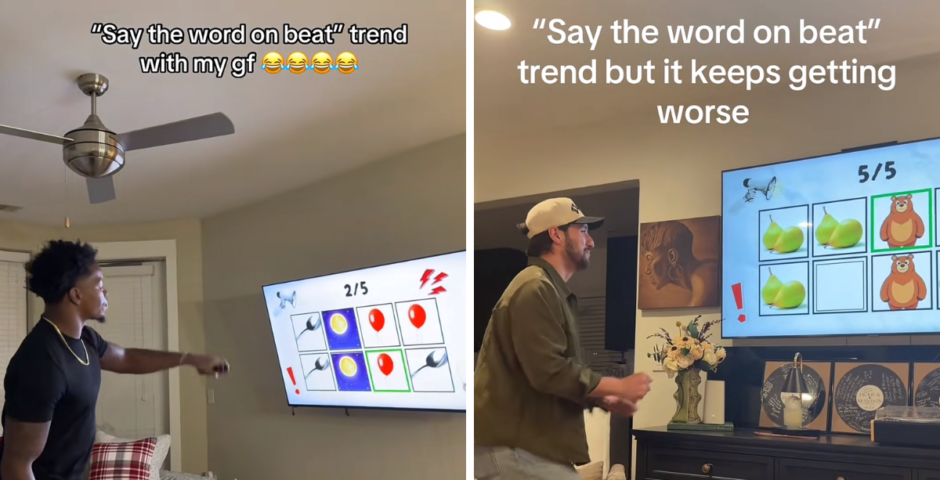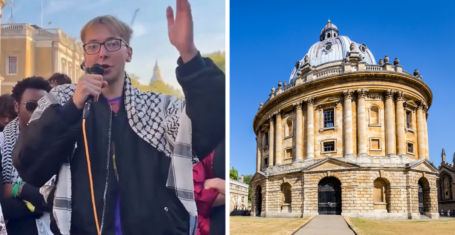
A comprehensive tour of London through six iconic albums
Take a break from your ambient study music and explore these legendary music spots in London
London is a city that is overflowing with history and music. Whether its the Peasants’ Revolt in 1381 or the Spice Girls reunion tour in 2019, there are always significant events happening in the English capital that leave their mark on the culture.
King’s College London is at the epicentre of it all. The Queen of pop herself, Taylor Swift, performed her first ever UK show at the KCLSU. Beyond the walls of campus, within a half an hour journey you can reach a plethora of world famous music venues such as Ronnie Scott’s, the Lexington, Electric Ballroom, the Roundhouse, the Royal Albert Hall and plenty more. There’s more than just music venues sitting on the doorstep of King’s, London’s rich cultural history extends to the various iconic album covers taken across the city.
So for all the music fans who want to dip their toes into the deep pool of London’s musical history, here’s a comprehensive tour of London through six iconic albums.
Animals – Pink Floyd

via Harvest Records and Colombia Records
Pink Floyd were known for their experimental style and their overt political messages and this album was no different. Released in 1977 (in between Wish You Were Here and The Wall), Animals was their tenth studio album and reached number 2 in the UK charts.
Most Read
The album is a concept album loosely based off of George Orwell’s famous dystopian novel, Animal Farm, critiquing capitalism throughout the lyrics. It was this concept that lead Roger Waters to decide on having Battersea Power Station as the cover art, representing the working-class animals of the album. Waters wanted a 12 metre pig balloon floating between the two chimneys, but, as floating balloons tend to do, it escaped and they had to super-impose it on the final image.
Battersea Power Station is no longer a functional power station as its been wonderfully refurbished to house designer shops, restaurants and bars. With plenty to do and a wonderful atmosphere, it’s worth a visit even if there’s not a floating pig at large, and it’s only a 15-minute journey on the northern line from the Waterloo campus.
Album rating: 7/10

London Town – Wings

via Parlophone Records
Although Paul McCartney is better known for being in the Beatles (you may have heard of them), he certainly enjoyed a good spell of success in his band Paul McCartney and Wings, releasing seven albums across eight years in the 1970s following the break up of the Beatles.
London Town was the sixth studio album for Wings, who were now onto their third line-up (Paul and Linda McCartney and Danny Laine), and, despite reaching the top four of the UK album charts, it would spell the beginning of the end for the band as they only managed to release one album after this.
While the Wings were no longer flying high commercially, this album still has an iconic cover and you can recreate it on the south side of the river right next to the HMS Belfast, just a nine minute walk from Guy’s Campus.
Album rating: 5/10

The Clash – The Clash

via CBS Records. Designer: Rosław Szaybo Photographer: Kate Simon
The debut studio album for one of the biggest punk rock bands in history. Despite failing to breach the top 10 when it was released back in 1977, The Clash’s debut album was loved by critics, earning a five star review from the Rolling Stone magazine, and it has gone on to be regarded as one of the greatest rock albums of all time, and shaped what the punk rock genre would become.
The album cover has become so iconic that the stairs they’re taken on have been named “The Clash stairs” and you can find them in Camden Market next to Coyote Ugly, a mere 25-minute journey from Guy’s campus or 30-minutes from either Virginia Woolf or Strand.
Album rating: 9/10

Absolutely – Madness

via Stiff Records
Madness might not be everyone’s cup o’ tea, but they were certainly popular, reaching number two in the UK album charts for the second time in the ska band’s history with the album Absolutely. Although it received mixed critical reviews upon release, the general reception seemed to be a positive one as “less gimmicky” than their debut album, One Step Beyond…, but still pleasing to lovers of their “nutty sound,” according to Billboard.
The biggest song from this 1980 album, Baggy Trousers, reminisces on the bands school days and the album cover pays homage to the bands Camden Town roots, taken just outside Chalk Farm underground station – a northern line stop only 18-minutes from Waterloo and 16 from Guy’s campus.
Album rating: 7/10

Abbey Road – The Beatles

via Apple Records. Photographer: Iain McMillan
Easily the most famous album on this list, Abbey Road was released in 1969 as the 11th studio album by the “most famous band in the world,” according to Kosh, the creative director at Apple Records during the release of this album.
Surprisingly, the album didn’t have the greatest critical reviews when it was first released, criticised for inauthenticity and artificial sounds. The negativity didn’t last for long though as it has since been heralded as one of the best albums of, not just the band, but all time – sitting as high as 14th on the Rolling Stone’s greatest albums ranking. Commercially, Abbey Road continues to be a success, peaking at number one in 11 different countries and has since become 12x platinum.
Its status as a legendary album is not limited to its music though, as the album cover is insanely iconic. According to Rolling Stone, it is the fourth best album cover of all time, and its also the only Beatles album sleeve without either the band’s name or the album title on it. Despite the band being from Liverpool, the famous zebra crossing is actually in London at the Abbey Road Studios, just a 20-minute train journey from Waterloo campus.
And don’t be fooled by what you read online about the crossing being moved for traffic reasons; it does in fact remain in the exact same spot it was back in 1969 (at the intersection with Grove End Road), it’s just been resurfaced and repainted from all of the people walking across it.
Album rating: 8/10

The Rise and Fall of Ziggy Stardust and the Spiders from Mars – David Bowie

via RCA Records. Photographer: Brian Ward
David Bowie’s fifth studio album was released back in 1972 and has become one of the most iconic, groundbreaking albums to come out of the 70s. The album acts as a concept album and follows the story of Ziggy Stardust, a bisexual, androgynous alien rockstar on an apocalyptic Earth. This was the album that seemed to be Bowie’s breakthrough album, spearheading him into becoming a potent pioneer and icon of glam rock and the gay scene in general during the 70s.
As was the case with most albums during this period, Ziggy Stardust was met with very mixed reviews, and a lot of critics thought the album was mediocre. Yet it did still reach the top five in the UK albums chart, and has gone on to become twice platinum. In retrospect, there’s a unanimous agreement on the importance of this album to music and the LGBTQ+ community, so much so that the character of Ziggy Stardust has earned himself a plaque at the site of the album cover. You can visit this plaque at 23 Heddon Street, less than a 20-minute bus journey from either Waterloo, Strand or Virginia Woolf.
Album rating: 9/10

(What’s the Story) Morning Glory? – Oasis

via Creation Records
One of the most iconic albums in British pop culture history. You cannot go to any karaoke night without hearing at least one of these belters sung at the top of someone’s lungs. Morning Glory was only the second studio album of the Manchester band, Oasis, released in 1995, at the height of Britpop. It has had an astonishing level of success since, becoming the UK’s third best selling album of all time and reaching 16x platinum – even being named as the greatest British album since 1980 at the 2010 Brit awards.
The lead up to the release of this album created the musical British Heavyweight Championship between Oasis and Blur – The Battle of Britpop. Although Blur won the lead up, Oasis certainly won the bigger fight; selling 345,000 copies in the first week, debuting at number one and staying in the top ten for all but one week of its first year.
The album cover was taken a measly 15 minute journey away from the Virginia Woolf building at Berwick Street. The road was chosen as it was a hotspot for record shops, and it is still the same today with three record stores on the road and a further four less than five minutes away – a must visit for all of the vinyl collectors at King’s.
Album rating: 10/10

















